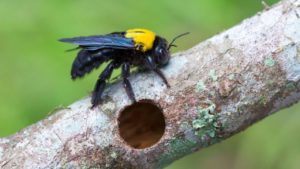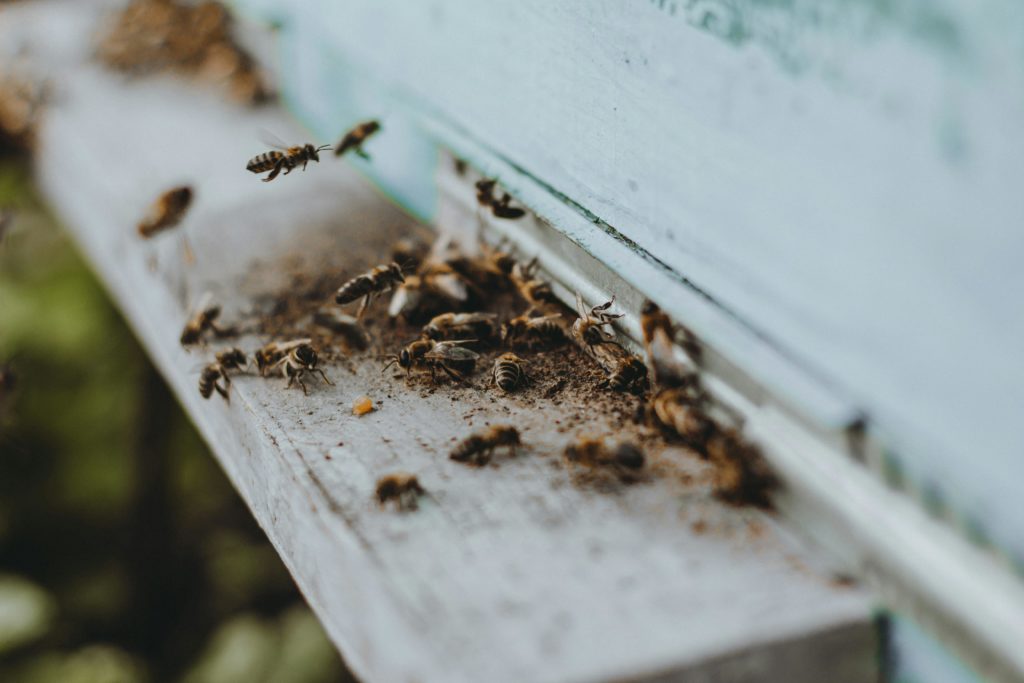As the chill of winter sets in across Melbourne, many pests disappear from sight but some, like wood-burrowing bees, remain quietly active in sheltered areas such as eaves, beams, and roof spaces. You might not see them flying around, but their presence can still leave a mark especially if unnoticed tunnels start appearing in your timber. While they’re solitary and less aggressive than wasps, their activity can still lead to costly damage over time. For peace of mind this winter, Bees Removal Melbourne offers expert solutions to detect and manage these hidden threats before they worsen.
Understanding Carpenter Bees
Carpenter bees are often confused with bumblebees because of their size and appearance, but a closer look reveals their shiny, almost hairless black abdomen—a key distinguishing feature. Unlike honey bees that thrive in large colonies, these insects lead a solitary life. The female excavates tunnels in timber to lay her eggs, sealing them in with a blend of pollen and nectar. Around Melbourne, they’re most visible in late spring and summer when nesting activity is at its peak. But it’s during winter, as they remain tucked inside their tunnels to escape the cold, that their presence becomes a quieter, hidden concern—making this season an ideal time for homeowners to address the issue safely.
Signs of a Carpenter Bee Infestation
1. Round, Smooth Holes in Timber
The most visible indicator of a carpenter bee nest is a perfectly round hole about 10-12 mm in diameter. These holes may be found in exposed wooden surfaces around your home—decking, railings, weatherboards, and under eaves.

2. Sawdust or Wood Shavings
As the bees drill into the wood, they eject fine sawdust (known as frass) beneath the hole. If you see this type of debris, it’s worth inspecting further.
3. Faint Buzzing Noises
While less common in winter, if your home is quiet, you may hear soft buzzing or tapping from within wooden structures where the bees are overwintering.
4. Yellowish Stains Near Entry Holes
Excrement or nectar residue from bee activity may stain the wood around the entrance holes.
By paying attention to these signs, it becomes easier to pinpoint nesting locations and assess the severity of the infestation.
Understanding the Damage
Although they aren’t aggressive, these wood-boring insects can cause long-term issues for your property. A single nesting hole might not seem serious at first, but they often return to the same spot year after year, gradually expanding their tunnel network.
Over time, this can weaken structural timber and reduce its durability. Multiple entry points can also make your home more vulnerable to moisture damage, wood rot, and even attract other pests like ants or rodents.
Preventive Measures
Before winter sets in, homeowners can take steps to discourage carpenter bees from nesting in the first place. Some proven tactics include:
- Painting or sealing timber: Bees prefer untreated or weathered wood.
- Installing mesh or screens: Cover ventilation holes, soffits, or known access points.
- Replacing damaged wood: Removing previously infested sections deters further activity.
Safe Methods for Eliminating Carpenter Bees
If you’ve already spotted a carpenter bee nest, dealing with it should be done cautiously. While these bees aren’t typically aggressive, they may still sting if provoked. Plus, improper removal techniques can result in incomplete elimination, leading to reinfestation.
Here are some strategies commonly used:
1. Dust Insecticides
These can be applied inside the holes during colder months when bees are dormant. After a few days, the holes can be sealed. However, this should be done with care to avoid trapping live bees, which can decay inside the timber.
2. Sealing the Holes
Plugging holes with wood filler or caulk helps prevent future use. It’s crucial that any existing bees are dealt with before sealing to avoid unintended consequences.
3. Wood Treatments
Applying bee-repellent wood preservatives or oils can make wood surfaces less attractive for nesting.
Bee removal Melbourne prices typically depend on factors like the number of nests, ease of access, and whether the nest is active or dormant. Winter treatments are often more affordable due to reduced bee activity, allowing for safer and quicker resolution.
Types of Bees Found in Melbourne Homes
It’s important to understand that not all bee sightings point to carpenter bees. Melbourne is home to a wide range of native and introduced bee species, and each behaves differently. Here are a few notable examples:
- Stingless Bees: Small and social, these bees are harmless and excellent pollinators.
- Blue Banded Bees: Known for their vibrant colouring, they are solitary and pose no threat.
- Masked Bees: Often mistaken for wasps, these bees are non-aggressive and beneficial.
- Resin Bees: Nest in cavities and use resin to build their brood cells.
- European Honey Bees: Found in large hives, they are more likely to swarm.
While many of these bees are important pollinators, carpenter bees are among the few that can directly affect the structural integrity of a home. Proper identification is key when assessing risk and deciding how to manage the issue.
Winter is an ideal time for Melbourne homeowners to inspect their property for hidden bee activity before it develops into a costly issue. For a safe and effective solution, reach out to Bees Removal Melbourne offering reliable, eco-conscious services to protect your home. Call 03 9021 3752 today for a free assessment and protect your home from costly bee damage this winter.




